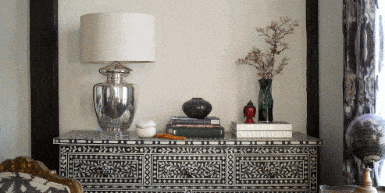Watch How Daylight Dramatically Changes the Appearance of One Paint Color

To make the paint color selection process even more complicated, there's one major variable to consider outside of which color you like best: sunlight. As the sun rises and sets outside your window, the light and shadows inside will constantly change—meaning even when you settle on a color and a finish for your walls, it will appear to be a million different shades throughout the day. Freaking out now? Don't worry, this is actually the beauty of paint (and good windows)!
A single color will shift to suit different moods throughout the day, making a painted room all the more magical. It's the reason there’s no replacement for testing a color on the walls in your actual room—and checking in on it multiple times throughout the day. Do you like how it's bright and rosy in the sunrise? How it looks in the harsh shadows before sunset? Be sure!
To prove how truly shape-shifting a single color can be, we had photographer Bjorn Wallander shoot the same swath of wall space throughout the course of a single day. Watch the color—Behr's Frost—go from brighter in the morning sun to a bit grayer by sunset with southern-facing windows (more on that in a minute).
Take note of this when you're trying to decide between a few neutral options, like a crisp white or soft cream; it'll help you decide whether you want to veer on the cooler or warmer end of the spectrum. Not sure how warm or cool the light is in your room? Here's a refresher:
South Facing Windows: bright, intense sun all day long.
West Facing Windows: a long period of direct sunlight, including a dreamy golden glow in the afternoon
East Facing Windows: a blast of bright light in the morning followed by a lack of light throughout the day
North-Facing Windows: soft, even exposure all day long
If you don't want to paint the sample in multiple parts of the room, you can also ways test out the paint color on a small piece of sanded wood, a canvas, or something similar and then prop it up by your window so you can witness it changing throughout the day.
Another thing to keep in mind is that the higher the sheen, the more reflective the color and paint will be. This also means that lacquered or high-gloss walls will be extra sensitive to lighting as it shifts, while the changing tone of paint will be less dramatic with flatter finishes (here's our guide to everything you need to know about paint finishes and how they can dramatically change the overall look of your walls, even when in the same color). Ready? Snag a few samples and test them out before you commit!
Follow House Beautiful on Instagram.
You Might Also Like

